Okay y'all, time to be honest. I pretty much entirely started this podcast so that I could read the Oz books. I got the first seven in very cheap, un-illustrated paperback from across several elementary school book fairs some 25 years ago and have read them, along with the remaining seven Oz books Baum wrote, numerous times each. There are precious few books that I have that have remained on my bookshelf continuously that whole time.
The Wonderful Wizard of Oz, the first of Baum's fourteen, was published in 1900 and was illustrated by W. W. Denslow, and boy did he illustrate the HECK out of it. I forgot, since my personal edition doesn't have any illustrations at all, just how many Denslow crammed in there. Just for these three chapters we've got a full twenty illustrations, not even including the title page, message from the author, copyright page, table of contents, and dedication page, all of which also have full-page illustrations. In addition to the illustrations that follow the story itself, each chapter has its own title page, along with an illustration heading each chapter's text (which is why some of these include a big word; it's the first word in that chapter.)
In fact, it's such a constant stream I'm not really going to bother time-stamping each of them, but I will include them all here after the jump so you can follow along.
This page contained the message from the author, which I forgot to read because, like the illustrations, it is also missing from my edition. It reads:
Folk lore, legends, myths and fairy tales have followed childhood through the ages, for every healthy youngster has a wholesome and instinctive love for stories fantastic, marvelous and manifestly unreal. The winged fairies of Grimm and Andersen have brought more happiness to childish hearts than all other human creations.In other words, Baum is preemptively letting us know that the "tedious moralizing" tag will not be needed much here.
Yet the old-time fairy tale, having served for generations, may now be classed as "historical" in the children's library; for the time has come for a series of newer "wonder tales" in which the stereotyped genie, dwarf and fairy are eliminated, together with all the horrible and blood-curdling incident devised by their authors to point a fearsome moral to each tale. Modern education includes morality; therefore the modern child seeks only entertainment in its wonder-tales and gladly dispenses with all disagreeable incident.
Having this thought in mind, the story of "The Wonderful Wizard of Oz" was written solely to pleasure children of today. It aspires to being a modernized fairy tale, in which the wonderment and joy are retained and the heart-aches and nightmares are left out.
L. Frank Baum.
Chicago, April, 1900.
This here was the table of contents page.
Here we see one of the first real noticeable differences between the book and the movie. Dorothy is still met by the Witch of the North, but the Witch of the North is not Glinda. Glinda, as we'll see later, spoilers, is the Witch of the South. This avoids a plot hole the movie created when it combined the two characters, which we'll see later.
And here's another of the noticeable differences: instead of Dorothy receiving ruby slippers, she gets silver shoes. They changed it for the movie because, hello Technicolor.
Of course, this does raise the question of whether the bows were made of silver as well.
Note here that Denslow has given Boq's house a very distinct face, made from the windows and the door. This conceit, carried over to John R. Neill, who illustrated all of the official Oz books following this one. It's never mentioned in the text itself, though, and the houses themselves are never portrayed as being actually alive (except for in the couple of late Oz books that Neill himself wrote, which are apparently WACKY.)
Readers of Gregory Maguire's Wicked: The Life and Times of the Wicked Witch of the West may recognize the farmer Boq that briefly hosts Dorothy for the night as one of Elphaba's college friends, and mention is made late in the novel of Dorothy having stayed at his house on her journey.
Baum mentions here that the people of Oz had never seen a dog before, so I suppose we are to assume that they simply don't exist in Oz, despite many other real-world animals living there. It's quite possible this is contradicted in later Oz books; continuity wasn't really one of Baum's strongest suits.
And why exactly does the Scarecrow have a bit of a southern accent of some kind? Because shut up, that's why.
Phew! That's a lotta illustrations, and there are more where those came from throughout the rest of the book. See you next time!
If you would like to read along, the text can be found at Project Gutenberg here without pictures, or here with. Though the illustrated page is where I got our illustrations from, the layout is wonky and can be hard to read, so to see what the text looks like with the illustrations properly integrated, take a look at this facsimile of the original edition up at openlibrary.org. No reading ahead, though!




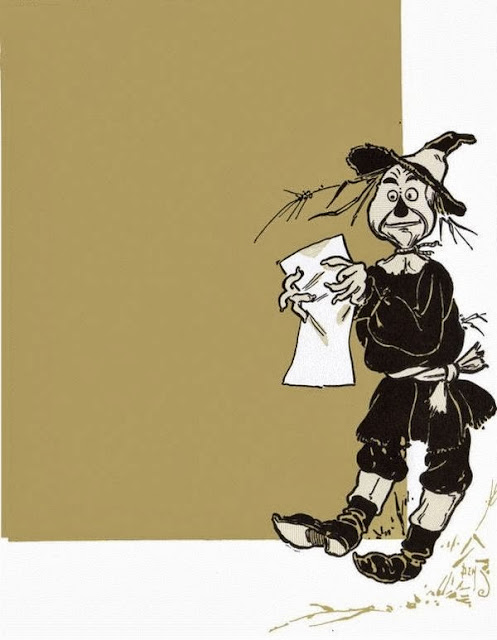


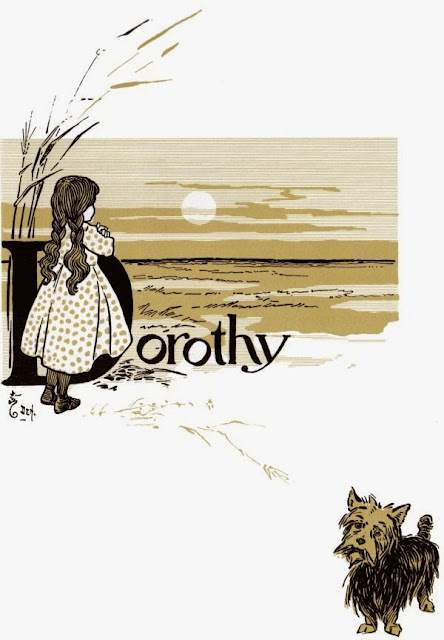


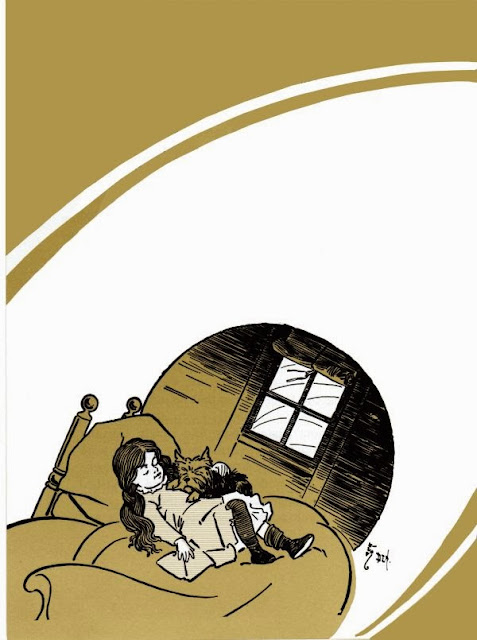
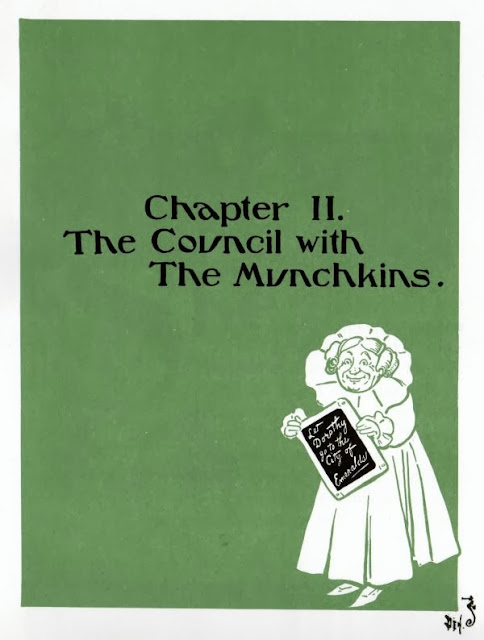
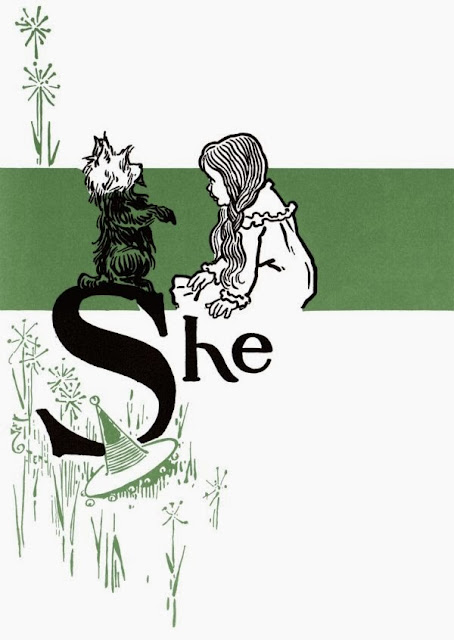




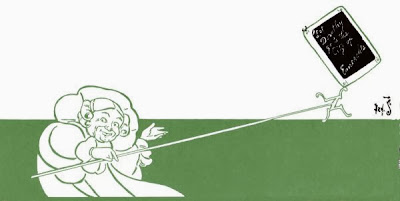
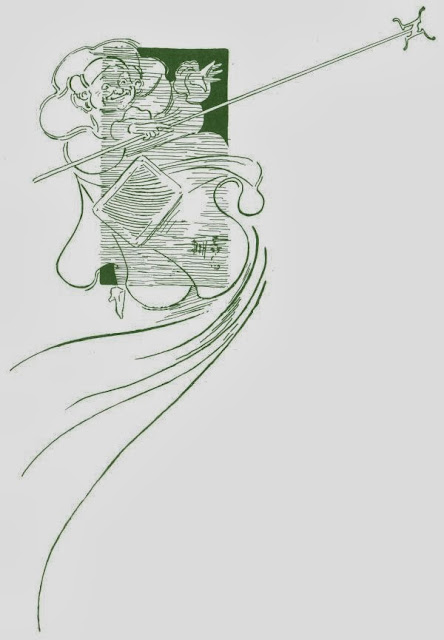

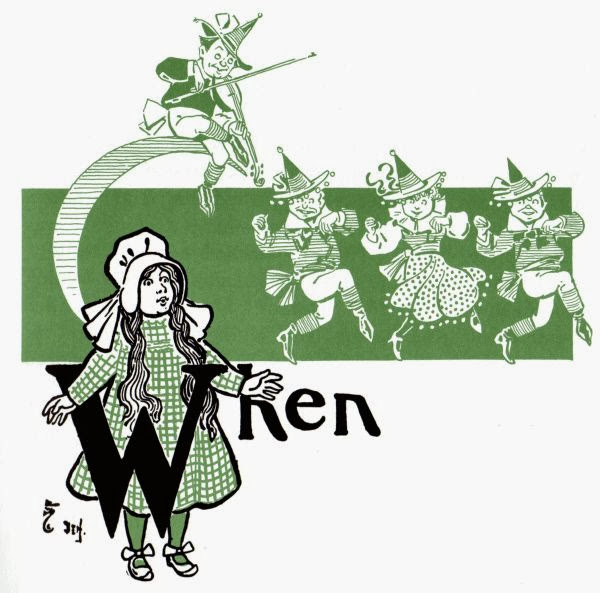




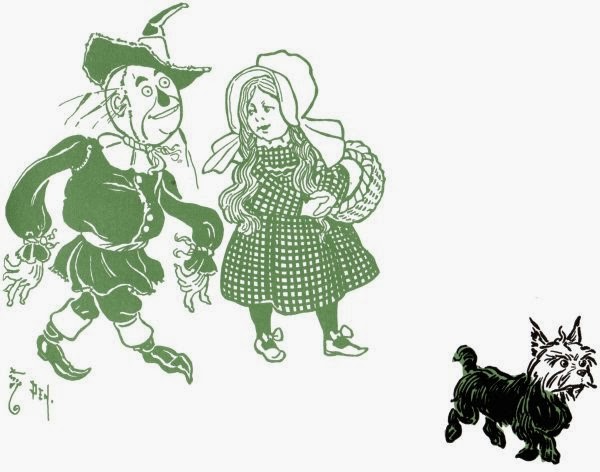
No comments:
Post a Comment